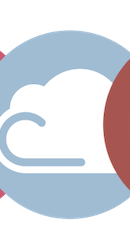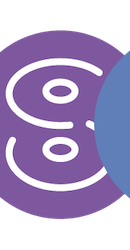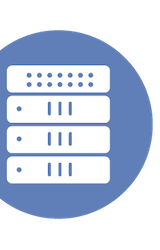Tech Field Day Coverage
Our delegate panel includes independent writers and thought leaders, and we collect their coverage of the event, Tech Field Day presentations, and sponsoring companies here.
Short Take – The Present Future of the Net
Tom Hollingsworth wrote up some quick thoughts from Networking Field Day. He saw Intel really pushing their 5G LTE wireless successor. PNDA really impressed Tom with their potential to change networking data analytics. Finally, VMware talked about the transition from traditional networking to one defined by microservices and application layer intelligence over dinner. Overall, sounds like Tom has a lot of food for thought!
Read More:
Short Take – The Present Future of the Net
IP Infusion: The Enterprise Whitebox Solution
Kevin Blackburn heard from IP Infusion last week at Networking Field Day, and got a good look at their white box networking OS and their virtualized platform. Their OS covers enough of the white box world to cover the entire range of interfaces and speeds. One interesting feature Kevin noted was that you can program your own application directly into the OS for added customization. Overall, Kevin enjoyed the configurability and documentation available from IP Infusion. He may have not heard of IP Infusion before the event, but he found them to offer a stable platform for network engineers to move into the white box networking world.
Read More:
IP Infusion: The Enterprise Whitebox Solution
Impact from Public Cloud on the storage industry – An insight from SNIA at #SFD12
SNIA, the Storage Networking Industry Association, presented at Storage Field Day last month, discussing the impact of the public cloud on the overall storage industry. These hyperscale companies operate differently, they buy storage in bulk, but not from traditional enterprise storage companies like Dell EMC or NetApp. Instead, they buy disk directly from manufacturer, often at extremely large scale. Chan Ekanayake thinks that while this will prove to be disruptive for traditional storage companies, overall it will push innovation and be better in the end for customers.
Read More:
Impact from Public Cloud on the storage industry – An insight from SNIA at #SFD12
Step by Step – Uila Monitoring – Deploy
For all of our Czech readers, Karel Novak wrote up a step by step guide on getting started with Uila’s monitoring solution. Here’s the English translation: http://bit.ly/2ogA0nY
Read More:
Step by Step – Uila Monitoring – Deploy
Anuta NCX: An Orchestration Platform For Networks
Drew Conry-Murray shares his thoughts on Anuta’s NCX solution, which he saw first hand at Networking Field Day in January. NCX is an orchestration platform designed to simplify a lot of networking drudgery. To do this, high-level models are constructed with Yang, which are then translated into specific device instructions when called upon. It even does device discovery to automatically understand which versioning and configuration on network devices. Key to this, Anuta has a wide list of hardware and software partners NCX supports.
Read More:
Anuta NCX: An Orchestration Platform For Networks
DPDK Project Moves To The Linux Foundation
Drew Conry-Murray the Data Plane Development Kit being brought into the Linux Foundation as an official project. DPDK was originally developed by Intel before being open sourced as a way to accelerate packet processing in CPUs. Drew highlights that DPDK supports not just x86, but a variety of CPU architectures, as well as being able to run on NICs from Broadcom, Cisco, and Mellanox.
Read More:
DPDK Project Moves To The Linux Foundation
Elastifile launches cross-cloud data fabric
Elastifile launched its Cloud File System at Storage Field Day last month. Andrea Mauro gives the details a run down in this blog post. They’ve designed it as a software-only, scale-out, elastic and flash-native solution, which can bring the efficiency normally found in hyperscale to the enterprise and cloud service providers.
Read More:
Elastifile launches cross-cloud data fabric
Networking Field Day 15 Preview
Networking Field Day started today, and John Welsh is in attendance. He wrote up a preview post looking at all the different presenting companies. Before you check out the live stream throughout the event, it’s well worth the read to get a better handle of what to expect from them.
Read More:
Networking Field Day 15 Preview
Presenting Vendor Preview: Gigamon
Brandon Carroll gives us a preview of what to expect from Gigamon at Networking Field Day this week. He first saw a presentation from them at Networking Field Day all the way back in 2011. He’s really interested in learning more about their security delivery platform, GigaSECURE solution. Check out the live stream of all presentation right here to find out! Plus join the conversation on Twitter with #NFD15.
Read More:
Presenting Vendor Preview: Gigamon
Presenting Vendor Preview: PNDA
Brandon Carroll gives us another preview of a presentation from Networking Field Day this week. This time he’s looking at PNDA. Sadly this is not an evolution on the personal digital assistant. Instead, it’s an open source scalable analytics platform, which is probably a lot more useful.
Read More:
Presenting Vendor Preview: PNDA
Extreme-ly Interesting Times In Networking
Tom Hollingsworth takes a look at some recent acquisitions by Extreme Networks. Since September, the company bought the data center networking business of Brocade, Avaya’s campus networking portfolio, and Zebra Wireless. For around $155 million, Extreme Networks has made themselves into a full stack networking company. Tom considers the implications.
Read More:
Extreme-ly Interesting Times In Networking
Datanauts 077: Transitioning To A Less Technical Role
On the latest episode of Datanauts, Tom Hollingsworth joins hosts Drew Conry-Murray and Ethan Banks to discuss the topic of transitioning to less technical roles as you advance in your IT career.
Read More:
Datanauts 077: Transitioning To A Less Technical Role
What Next for the new Tier 0 Storage?
Chris Evans takes a look at the state of tier 0 storage, the custom hardware platforms that can deliver millions of IOPS. This was given a shake up recently with Dell EMC’s announcement that they aren’t moving forward with DSSD. Chris thinks the problem with these custom platforms is they can’t keep up with the rapid pace of flash storage development. He sees the future of tier 0 high performance storage with software defined solutions on commodity hardware, like what we’ve seen recently out of Excelero and E8 Storage.
Read More:
What Next for the new Tier 0 Storage?
New Career Adventure — Joined Rubrik
While we’re sad she won’t be joining any more Tech Field Day events as a delegate, we’re happy to see Rebecca Fitzhugh took on a technical marketing role with Rubrik! Look forward to more of her excellent writing specifically focused on the company. Congratulations Rebecca! If you need to catch up on Rubrik’s latest and greatest, make sure to check out their Tech Field Day videos embedded in the post.
Read More:
New Career Adventure — Joined Rubrik
NFD15 – TELoIP VINO – Part 1
Kevin Blackburn wrote up an excellent preview of TELoIP, an SD-WAN provider. He looks at their Virtual Intelligent Network Overlay and how it appears to operate based on existing information. He’s excited to learn specifics directly from TELoIP, and plans to learn how they differentiate themselves in the increasingly crowded market.
Read More:
Presenting Vendor Preview: IP Infusion
Brandon Carroll reviews what to expect from IP Infusion. It’s their first presentation at a Networking Field Day event, and we’re excited to see what they’ll have on tap. Brandon is interested to see how they differentiate themselves in the network operating system space.
Read More:
Presenting Vendor Preview: IP Infusion
[Video] Gigamon Network Field Day 15 Preview
Keith Townsend gives a preview of one of the companies at this week’s Networking Field Day. Today, he gives a video review of what to expect from Gigamon at the event. He talks about the company’s established role in the networking visibility space, and expects to get into some deep technical discussions during the presentation.
Read More:
[Video] Gigamon Network Field Day 15 Preview
Visiting Intel with SFD 12
Howard Marks was at Storage Field Day and got to see the latest and greatest from Intel. As the current de facto CPU and chipset vendor in the data center, Howard sees them as having an immense responsibility in terms of dictating computer architecture. Luckily from what Howard saw at Intel’s presentation, they are living up to this. As an example, he goes into the applications and implication of their Storage Performance Developer Kit, as well as their recent release of the first commercial 3D XPoint.
Read More:
Presenting Vendor Preview: TELoIP
Brandon Carroll gives a preview of TELoIP, one of the presenting companies at Networking Field Day next week. They are an SD-WAN and WAN Orchestration provider. He’s really interesting in what makes their SD-WAN approach stand out. SD-WAN is now an established product in the enterprise, so Brandon is interested in their differentiation. If you want to watch along, check out the live stream during the event, or check back after for full video coverage.
Read More:
Presenting Vendor Preview: TELoIP
#NFD15 – Delegate Selection
Kevin Blackburn is heading to Networking Field Day next week, it’s his first event and we’re excited to have him there. He’s looking forward to hearing from the presenting companies with technical deep dives, and asking pertinent questions. Make sure to follow along on the live stream, and join the conversation on Twitter using #NFD15.
Read More:







